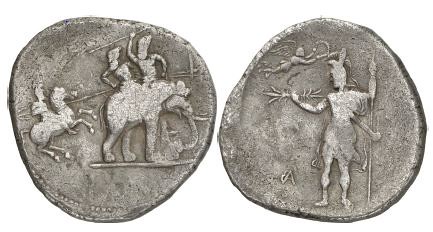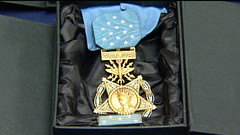
PREV ARTICLE
NEXT ARTICLE
FULL ISSUE
PREV FULL ISSUE
NOTES FROM E-SYLUM READERS: OCTOBER 30, 2011 Skewing Technique Goes Viral 
John Mutch forwarded a link to Dick Eastman's geneology blog post describing Bill Eckberg's skewing technique for making slanted signatures more readable. It's nice to see a great idea get wider recognition.
-Editor
How do you read a signature that is heavily slanted with the letters seemingly run together? Genealogists have that problem when trying to identify signatures but numismatists (coin and money collectors) also have the same problem when trying to identify signatures on banknotes and checks. The answer? Open a digital image of the signature in a photoediting program and then skew it (slant it) until the signature appears to be more vertical. A great example can be found in The E-Sylum, an electronic publication of the Numismatic Bibliomania Society, at http://www.coinbooks.org/esylum_v14n43a06.html. Neat trick! My thanks to Shirley Wilcox for telling me about the article.
To read the complete article, see:
Skewing - A Technique for Signature Identification
(blog.eogn.com/eastmans_online_genealogy/2011/10/ American Interactions with Paper Money One of our Research Fellows has been working in our obsolete paper money collection and is presenting in what we call our Brown Bag series of conversations with the public. You bring your lunch and we provide the drinks and cookies while our researchers discuss their current projects. This promises to be an interesting foray into exactly how Americans actually used the pieces of paper we enjoy collecting today…
Thanks! Here's the description of the talk.
-Editor
2 November 2011
The proliferation of banks and other monetary minded institutions in the early republic fashioned more than the skeleton of a financial infrastructure, it saturated the nation with more than 5,000 unique legal and semi-legal forms of bank notes and shinplasters. This project examines how Americans engaged and actually used paper money as it circulated from person to person. Focusing on microlevel transactions, rather than macrolevel banking, it reveals the variety of ways people attempted to make sense of this chaotic system. Free and open to the public More Two-Faced Coins There are a few you forgot in the trivia question. The 2009 Lincoln Cent has two examples: one of him sitting on a log and another one where is in front of the Springfield Illinois State Capitol. Abe's in good company. Caroline Newton of Baldwin's in London forwarded a press release about the firm's upcoming sale of the Prospero Collection of ancient Greek coins. Featured is another "two-faced" coin.

Lot 304 is without doubt one of the most historically important coins ever produced. The ‘Poros' dekadrachm of Alexander the Great depicts Alexander the Great on both the obverse and the reverse. An example was first published in 1887 (NC 1887, pp. 177-181). In 1973, a new hoard was found in Babylon (Coin Hoards I, 1975, 38), which increased the published examples from three to seven. It was this hoard that assisted with the dating of the issue to the lifetime of Alexander the Great. The above example, probably from the same hoard, surfaced in 1989. For more information about the sale, see: www.baldwin.co.uk/prospero . Who Says Paper Was Worth More Than Gold? I challenge the article "When Paper Was Worth More Than Gold." Though the popular demand for one form of money (paper) may have been greater than the popular demand for the other form (gold), the two forms were fully fungible and of equal WORTH!
I figured that headline would grab some attention - no doubt the Numismatic News editor thought so, too. Tom's correct, of course, but this is a good illustration of a paper promise that was believed to be "good as gold". Today, not so much.
-Editor
To read the earlier E-Sylum article, see: NOTES FROM E-SYLUM READERS: OCTOBER 23, 2011 (www.coinbooks.org/esylum_v14n44a14.html) Medal of Honor Certificates
To read the earlier E-Sylum article, see:
UNISSUED MEDALS OF HONOR TURNED IN TO AUTHORITIES
(www.coinbooks.org/esylum_v14n44a15.html)
The Numismatic Bibliomania Society is a non-profit organization promoting numismatic literature. See our web site at coinbooks.org. To submit items for publication in The E-Sylum, write to the Editor at this address: whomren@gmail.com To subscribe go to: https://my.binhost.com/lists/listinfo/esylum All Rights Reserved. NBS Home Page Contact the NBS webmaster 
|
